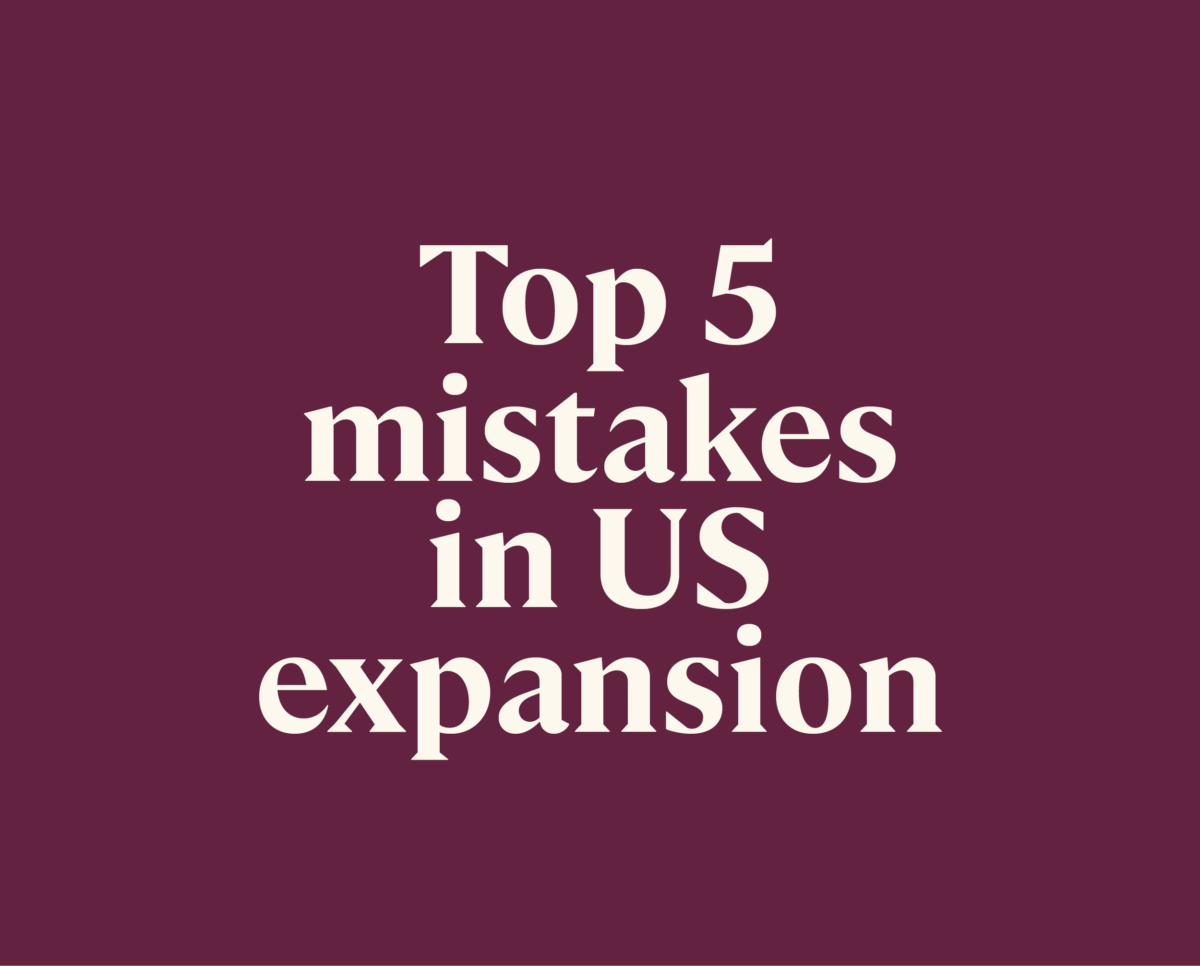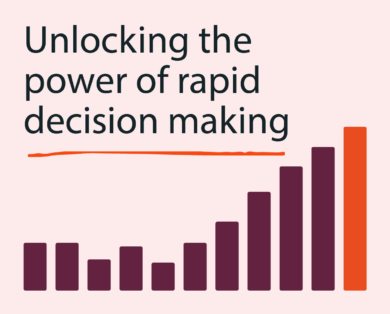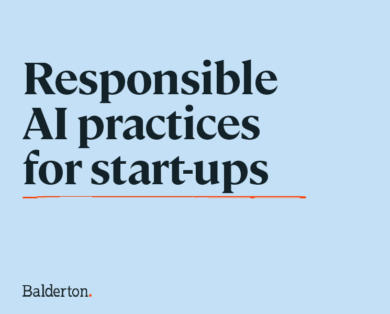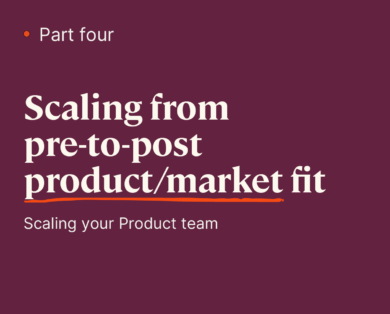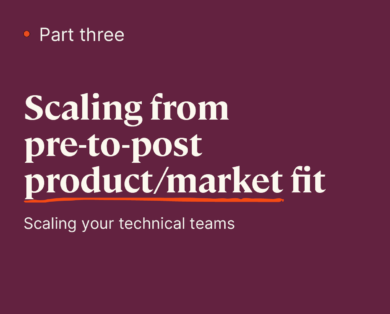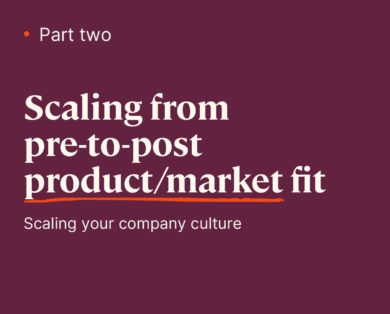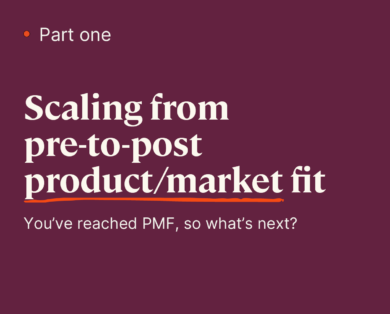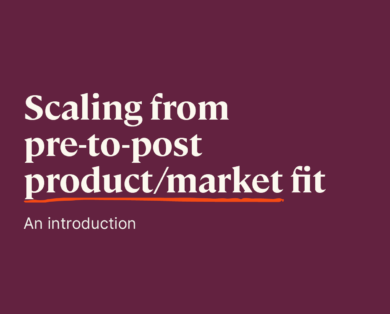- 09 April, 2025
This is the second post in a series on the top five mistakes European startups make in US expansion. This post addresses mistake number one: delay.
Given the enormity of US expansion, some founders find themselves facing a serious case of threshold anxiety and create rationalizations for why they must pass some critical, yet often entirely arbitrary, milestone before beginning. Such procrastination is unhealthy, leaves the market fallow for other entrants and delays the pains – but also the gains – that come with entering the US market. If learning to ride a bicycle entails skinning a knee, then delaying your first bicycle lesson will indeed delay your first scrape, but it will also delay your first unassisted ride.
Common rationalizations for delaying US expansion include:
- Artificial size thresholds.
The company decides to wait until it attains $5M in ARR, then $10M, and then $15M before beginning. What begins as a desire to attain critical mass ends up an exercise in shooting at moving targets. - Arbitrary timing constraints.
Instead of saying, “we need to be $10M in ARR,” the company can decide that, “we need to be 4 years old.” The chosen number might be arbitrary or it could be selected by pattern matching against other companies – but either way, it risks being chosen without sufficient regard for circumstances or situation. - Myopic financial planning.
The one-year ROI on a US expansion is invariably negative and the incremental return of hiring “just two more sellers” in Germany will always be higher than expanding into the US. Unless you look at the bigger picture and the longer-term, the math will almost always suggest that you delay. - Refusing opportunistic sales.
Some startups decide that a “toe in the water” strategy cannot work and refuse US-based inbound interest from customers otherwise willing to tolerate the disadvantages of buying pre-US-launch. This belief – that the company needs to be all-or-nothing in the US market – is a subtle form of delay that prevents customers from self-selecting and delays acquisition of the first US-based customers. - Needlessly rethinking strategy.
Sometimes startups decide that the strategy that worked in Europe cannot work in the US and ergo that they must change their strategy in planning their US launch. This entails finding an alternative strategy that they believe will work, and thus becomes a form of delay – and one that can end with the company entering the US market from a position of weakness, not strength. - Waiting for Godot.
The company decides it needs to wait until it can find the “right person” to lead its US expansion. Sometimes, companies try to develop a trusted European employee before dispatching them to the US. Other times, they wait hoping to attract a Renaissance leader who may not even exist, let alone be interested in joining a US expansion on the ground floor. Waiting sounds fine but what if, as in the Beckett play, Godot never arrives?
“The secret of getting ahead is getting started.” — Mark Twain
How can you know whether your company is finding valid reasons or contriving lame excuses for delaying US expansion? This is a great example of when having trusted advisors, who should be able to bring both experience and some degree of objectivity, can be critical. The reality is that in many cases, the best action is to Just Do It, so that the company can begin the cycle of learning that comes with US expansion. As Mark Twain said, “the secret of getting ahead is getting started.”
What should you do, then?
Flip your mindset.
Change your mentality from “why now” to “why not now?’ Changing this default will reframe the exercise in the company’s mind from “we’re waiting to check a hundred boxes that all must be completed before we’re ready” to “we need a short list of valid reasons why we shouldn’t start yet.” And we’re going to quickly work through it.
Assign a US territory.
Have one seller start processing inbound leads (or trials) from the US market, carefully trying to disqualify them early in the process. Think: “you do know we offer support only during extended French business hours, the documentation is in broken English, we have no local implementation consultants, and the data in the example database is all in French? And you still want to consider working with us? Great!” If your product solves a big enough problem some people will buy it regardless of these irritants.
Help the right customers self-select into this group, selling them what is, in effect, your minimum “not quite viable” product for the US market. You’re not looking for win-rates or a highly efficient customer acquisition cost (CAC) ratio in these deals. You’re looking to get some early experience in the US market, so you can start addressing the basics (e.g., English-language contracts) and so that when you land in the US, you’ll have a small set of local references already in place. (At your ten-year anniversary party those early customers will love telling stories about all the crazy things that were missing when they first bought your product.)
Make a multi-year plan.
Make a three- to five-year, holistic model for building the US organization. While you might start with a handful of generalists, certainly by year 2 you will start building a ratio-driven, go-to-market organization. For example, for each account executive (AE), you hire 0.5 solution consultants (SC), 0.66 sales development reps (SDR), 0.16 sales managers, 0.1 sales ops and 0.1 alliances. (In other words, a 2:1 AE/SC ratio, a 3:2 AE/SDR ratio, a 6:1 AE/manager ratio, a 10:1 AE/ops ratio, and a 10:1 AE/alliances ratio.) Support is built based on cases/customer and cases/agent. Consulting is modeled off an attach rate to new bookings and a utilization model. Demand generation is built using an inverted-funnel based on the number of deals needed at a given average sales price (ASP). While you can’t capture everything easily using these ratios and calculations, you can capture most of it, and the bigger the organization gets, the better the model tends to work.
Be realistic in modeling early productivity and AE attrition so that you produce a plan that you can achieve. Chasing plan is never healthy and the last thing your company needs is a culture where the US is seen as failing to achieve an overly aggressive plan while Europe is overachieving a relatively easier one. As was told to me when I took my first CEO job, “make a plan that you can beat” and ensure the degree of difficulty is consistent on both sides of the Atlantic.
Put your best foot forward.
Enter the US market from a position of strength by entering with your core use-case, buyer persona, and (if applicable) industries. In many cases you may need to refine your strategy, for example, by choosing to enter using only one of your existing three core use-cases or industries. In rare cases you may need to adapt your strategy because one of your core markets is idiosyncratic (e.g., French Public Sector). Almost never should you attempt to enter the US market in the most dangerous box of the Ansoff Matrix, selling a new thing (product or use-case) to a new type of customer (industry). If you think doing so will be necessary, it is better to delay US entry until you build experience in Europe with the new combination before taking it to the US.
Send a cofounder.
Instead of waiting for the “right” or “perfect” person to hopefully come along, send a cofounder to help with the market entry. Depending on their skills and existing role, that might mean sending the founder/CEO to oversee the entire effort or it might mean sending over a technical cofounder to serve as a turbocharged solutions consultant or a technical visionary to do developer relations and conference speeches. In addition, do the converse – send only a cofounder. Hire local talent for the rest of your team so you can benefit from their knowledge of the US market and their existing customer and peer relationships. But the real point here is don’t wait for some perfect person to come along – you likely already have them on your team and they’re one of your cofounders.
In our next post in this series, we’ll discuss mistake number two — failing to adapt structure and process as you execute your US expansion — and how to avoid it.

Read the next post – Mistake 2: Failing to adapt structure and process
 DAVE KELLOGG
DAVE KELLOGG 